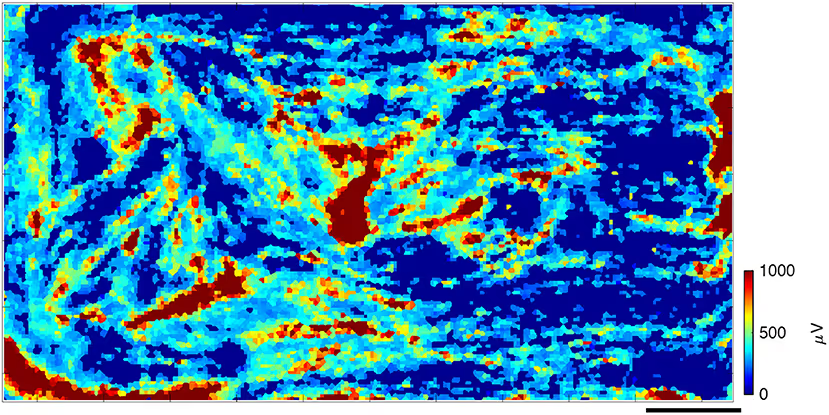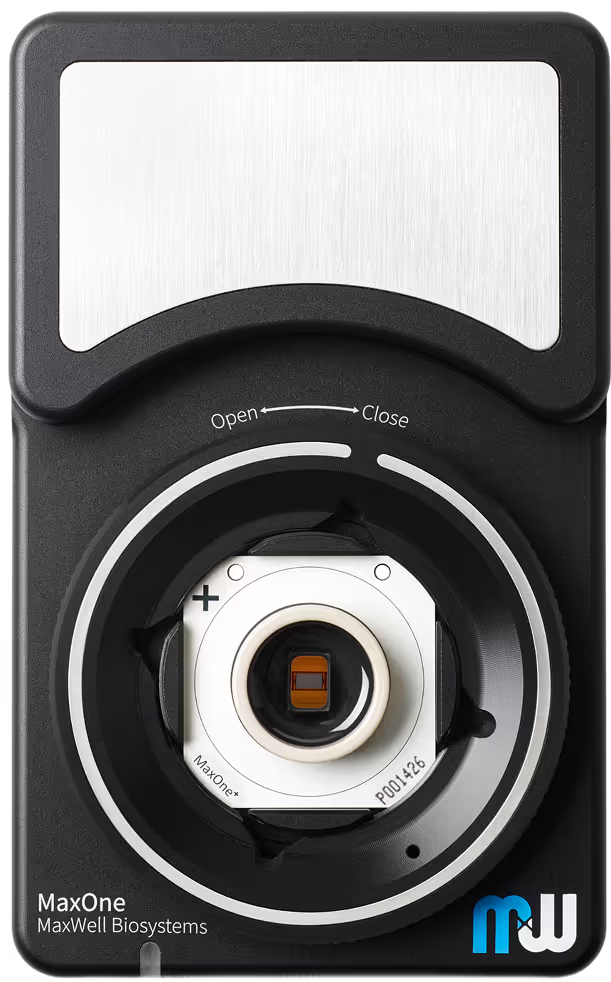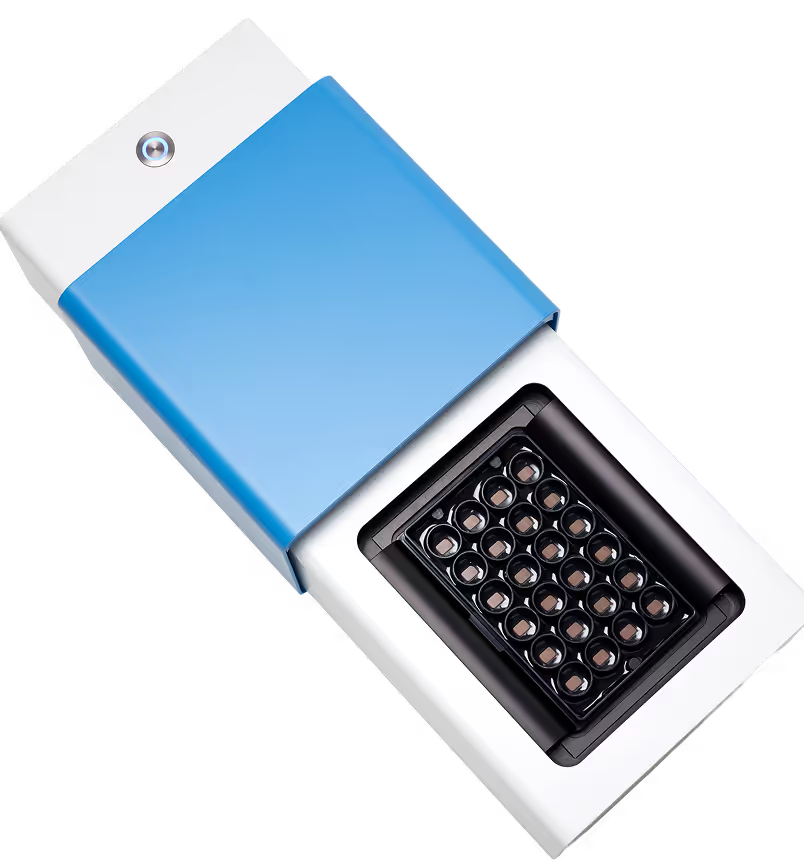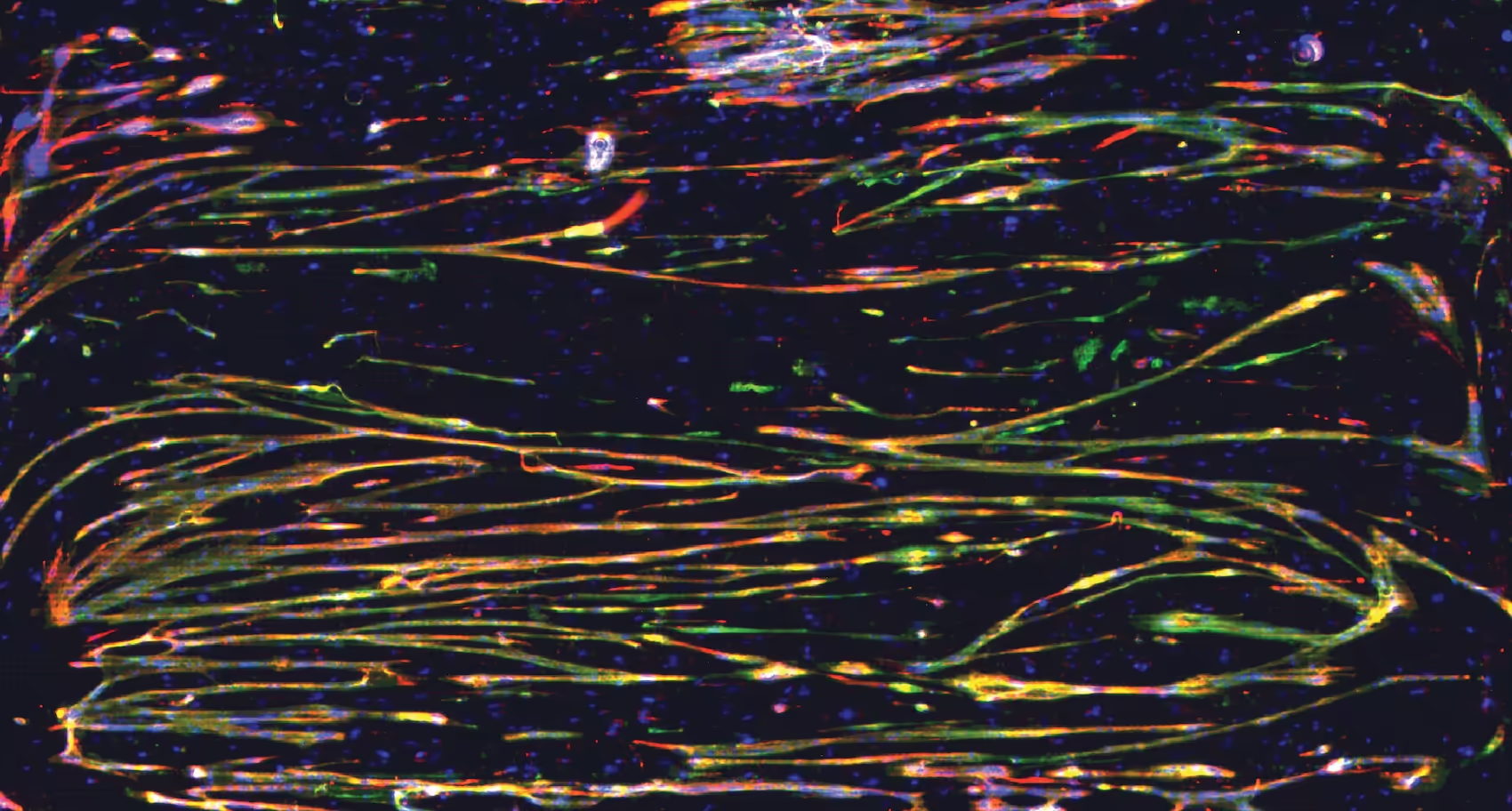
Others
Every Cell has a Story to Tell.
Let’s Discover Yours
Electrically active cells play key roles across diverse biological models. Cardiomyocytes and muscle cells, for example, provide powerful in vitro models for investigating excitability, contraction, and tissue-level coordination.
Our High-Density Microelectrode Array (HD-MEA) technology captures rich electrophysiological signals at subcellular, single-cell, and network levels, delivering precise, label-free insights with unmatched spatial and temporal resolution.

Unbounded possibilities for your model
Our system adapts to your biological sample. Capture high-resolution functional data across electrically active samples with ease and reproducibility.
Every cell has a story to tell
Capture neuronal signals with unmatched single-cell resolution, many cells at a time.
Always at the right spot
Record high-quality data with thousands of electrodes per well, precisely positioned below the cell of interest, always right where it matters.
Don’t lose out on any action potentials
Acquire reliable action potentials, from largest to tiniest, and fully characterize the behavior of every cell and of the full population.
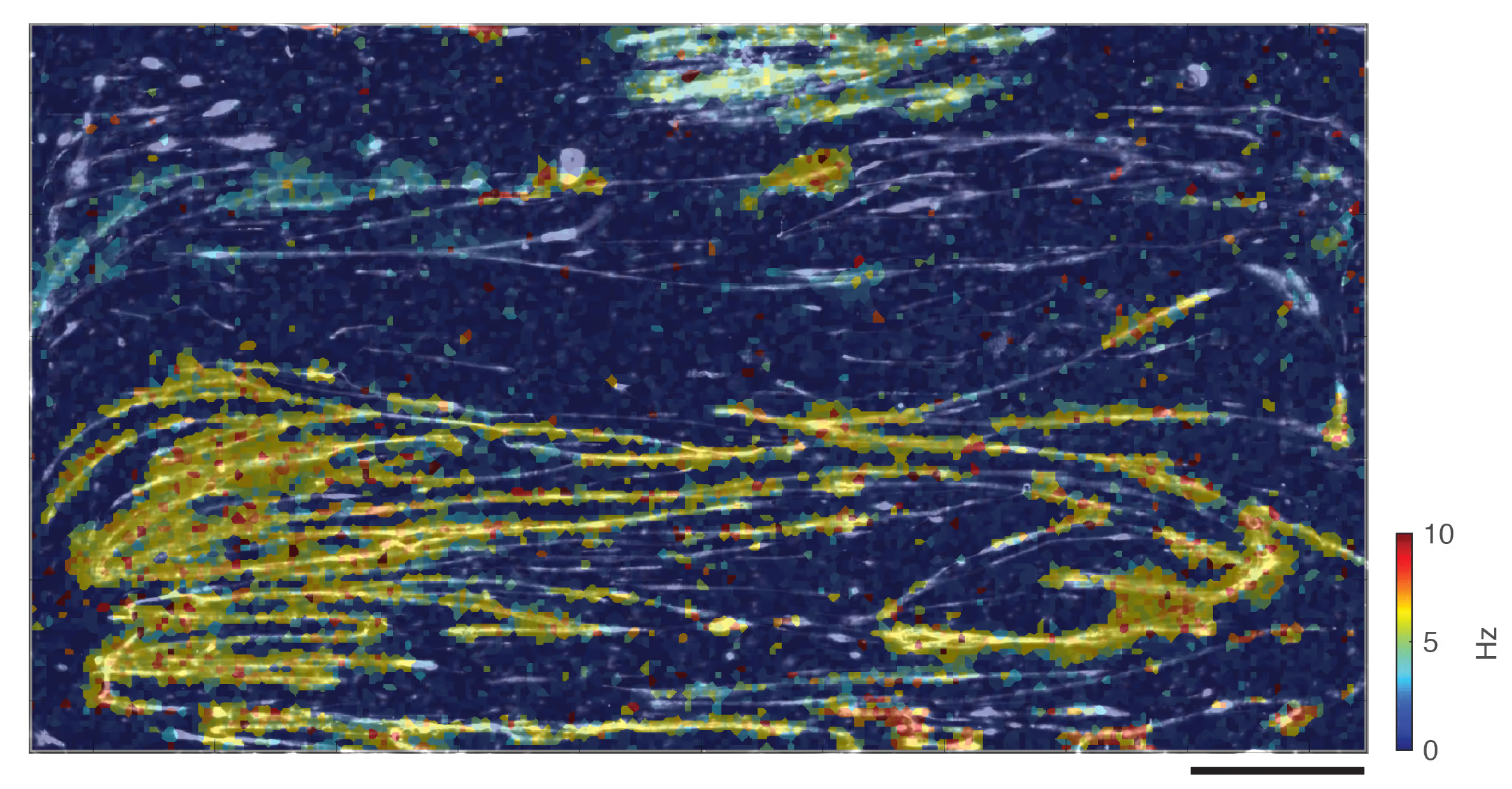
Sample Recordings
The MaxOne Single-Well and MaxTwo Multi-Well HD-MEA Systems enable high-resolution functional recordings from electrically active muscle and cardiac models. With 26,400 flexibly addressable electrodes per well, precisely monitor signal propagation, contraction patterns, and network synchrony.
Case studies
Analyzing burst propagation in cardiomyocytes networks
Cardiomyocyte cultures form spontaneously active, electrically coupled networks that generate rhythmic bursts of activity. With our HD-MEA technology, you can visualize how these bursts initiate and propagate across the culture in real time, offering insight into synchronization, conduction properties, and functional connectivity of cardiac tissue. These insights are essential for understanding functional maturation, connectivity, and arrhythmogenic behaviors in cardiac models.
Burst propagation in a primary cardiomyocyte culture recorded with HD-MEA technology
The video shows a time-lapse of a spontaneous burst traveling across the electrode array, where the activation of the single cells is color-coded depending on the amplitude, revealing the direction and speed of activation.
Data courtesy of MaxWell Biosystems’ user.
Tracking electrical maturation in skeletal muscle cultures
Investigate how skeletal muscle cells develop, synchronize, and communicate over time using our HD-MEA technology. Below, spontaneous spiking activity is visualized at subcellular resolution after one month of culture, revealing the emergence of organized electrical activity as myotubes form functional, contracting networks.
Top: Spontaneous activity in primary skeletal muscle culture at 30 days in vitro
Each square in the heatmap represents an electrode, color-coded by the average spike amplitude recorded during the session. Red “islands” indicate regions of high-amplitude spiking activity, surrounded by lower-amplitude filaments that reflect active connections between contracting myotubes. Blue areas denote regions with no recorded spikes. The spatial organization and variability in signal strength reflect the maturation and functional compartmentalization of the tissue. Scale bar: 0.5 mm.
Adapted from Lewandowska et al., 2018.
Bottom: Time- and space-resolved spiking activity in skeletal muscle culture.
(A, B) Raster plots showing 5 seconds of spontaneous activity recorded at 19 days in vitro (DIV) and 31 DIV, respectively. Each row represents an individual electrode, and each dot marks a detected spike. (C) Zoom-in on the first four spikes from (B). (D, E) Spatially resolved spike timing of the second (red) and fourth (blue) spikes highlighted in (C). Scale bar in (E) is 0.5 mm and applies to (D) and (E).
Adapted from Lewandowska et al., 2018.
Time- and space-resolved spiking activity in skeletal muscle culture.
(A, B) Raster plots showing 5 seconds of spontaneous activity recorded at 19 days in vitro (DIV) and 31 DIV, respectively. Each row represents an individual electrode, and each dot marks a detected spike. (C) Zoom-in on the first four spikes from (B). (D, E) Spatially resolved spike timing of the second (red) and fourth (blue) spikes highlighted in (C). Scale bar in (E) is 0.5 mm and applies to (D) and (E).
Adapted from Lewandowska et al., 2018.
Relevant
Applications
Relevant Biological Models
Resources
CardioMEA: Comprehensive Data Analysis Platform for Studying Cardiac Diseases and Drug Responses

Repeated and On-Demand Intracellular Recordings of Cardiomyocytes Derived from Human-Induced Pluripotent Stem Cells

Long-Term High-Density Extracellular Recordings Enable Studies of Muscle Cell Physiology

MaxOne Cardiomyocyte Plating Protocol
This document describes the protocol to plate and maintain cardiomyocytes using MaxOne.


